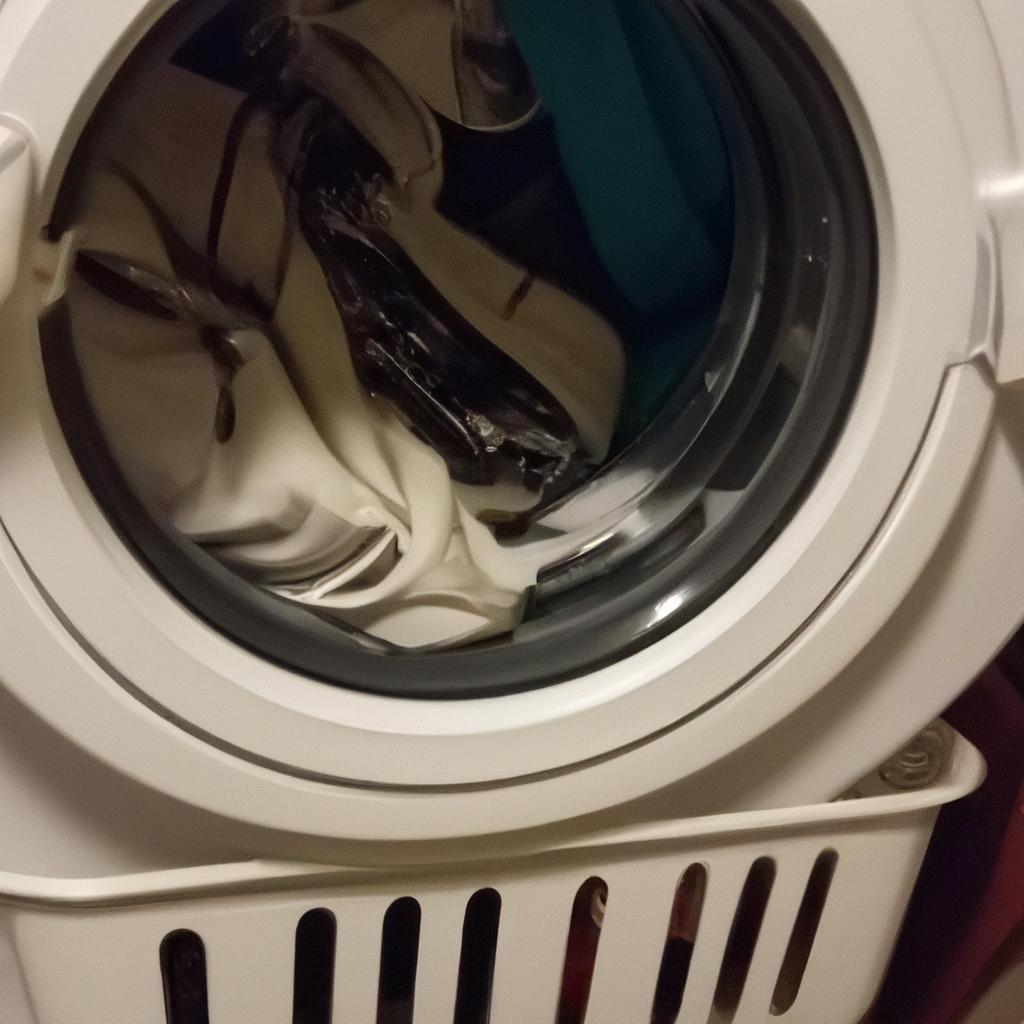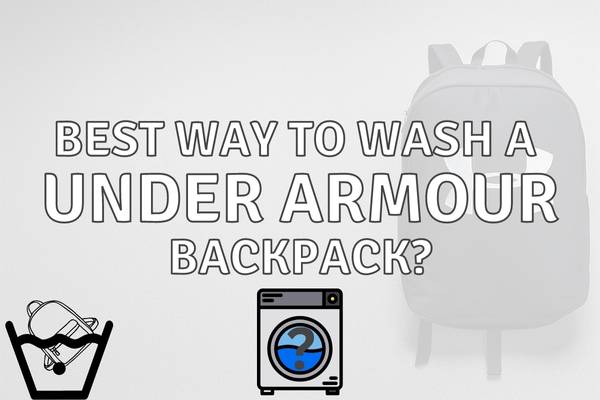Are you looking for a way to dry your tent quickly and easily? If so, you may be wondering if it’s possible to put a tent in the dryer.
No, you should not put a tent in the dryer. The high heat and tumbling action can damage the tent’s fabric, seams, and waterproof coatings.
Instead, allow the tent to air dry completely by setting it up outdoors or hanging it in a well-ventilated area. Make sure it is fully dry before storing to prevent mold and mildew growth.
While the answer is generally no, there are some important considerations to keep in mind before attempting any washing and drying of a tent. As an outdoor expert with years of experience keeping my gear in top condition, I can tell you that putting a tent in the dryer isn’t as simple as it may sound.
In this article, we will discuss why it’s important to consider what type of fabric your tent is made from before attempting to use a dryer, how long and on what setting you should run the machine, and other tips for safely drying out your wet tent without damaging its structure or components.
Read on for all the details!
Dangers Of Drying A Tent
Trying to put a tent in the dryer is like playing with fire. When you play with fire, something bad can happen quickly and permanently.
The heat from a dryer can damage all of the materials used to make tents: nylon, polyester, and waterproofing sprays.

Heat also causes any mildew prevention built into the fabric to break down rapidly, leading to moldy spots that cannot be fixed by machine washing or air drying.
The effects are so severe because camping tents are not made for using heaters or other artificial means of drying them out.
Even if it seems your tent will come out looking brand-new from putting it in the dryer, there could be long term consequences that won’t show up until later on when you’re making memories outdoors.
But don’t worry–there are alternatives available!
Alternatives To Tumble Drying A Tent
When it comes to drying out a tent, air drying is the best option. Just set it up and leave it in a sunny spot for a few days. Hang drying is a good alternative if you don’t have the space for air drying, but it will take longer for the tent to dry fully.
Wiping down the tent with a damp cloth is also a good way to get rid of any visible moisture. Finally, if you need to get rid of a few stubborn creases, you can use an iron on a low setting to steam them out.
Air Dry Outdoors
If you’re looking for an alternative to drying your tent in the dryer, air-drying is a great option.
It’s just like it sounds – hang up your damp tent and let nature do the work!
Not only does this method avoid any potential damage from heat exposure, but there are some added benefits as well.
When you air-dry your tent, it helps prevent excess dampness and fabric deterioration while promoting mildew prevention.
So not only will you be able to enjoy more camping trips with a longer lasting tent, but you’ll also have that sense of freedom knowing that mother nature has taken care of the job for you!
Hang It Up
Hang drying your tent is a great way to get the most out of air drying it while preventing mold and avoiding shrinkage.
It’s best to choose fabrics that will hang dry well, like nylon or polyester, in order to make sure they don’t stretch out too much when wet.
This method also allows you to use any available space for air-drying without having to worry about damaging heat exposure.
For those looking for freedom from extra effort, this is an ideal alternative as mother nature takes care of all the hard work!
So take advantage of natural elements and enjoy your camping trips with a longer lasting tent.
Wipe Down
After discussing the hang drying method, another effective way to extend your tent’s life is by wiping it down. This prevention method helps keep dirt and other particles from settling in the fabric of your tent, protecting it from damage.
To do this properly, you’ll want to store your tent at a cool temperature and make sure that any cleaning fluids are non-abrasive so as not to harm the material.
Depending on what type of fabric your tent is made out of (nylon or polyester), different types of wipes may work better for specific fabrics.
Ultimately, this simple step can save you time and hassle when camping season rolls around again! Plus, with regular maintenance like this, you can enjoy stress free exploration knowing that your tent will be in good condition whenever you need it.
Cleaning And Storing A Tent
Washing a tent is an essential part of tent maintenance. I’d recommend hand-washing with cold water and some mild soap.
Drying a tent can be tricky – ideally, you’d let it air dry, but if you’re short on time, you can use a fan or even a hairdryer set to a lower setting. Just be sure not to overheat the fabric!
Folding a tent correctly is important for storage. I suggest laying it out flat on the ground and folding it back up in the same way it was originally packed.
Storing a tent properly is key for a longer life. I recommend keeping it in a dry, cool place and storing it in the bag it came in or a special storage bag for extra protection.
Washing A Tent
As an outdoor expert, I’m always asked whether it’s safe to put a tent in the dryer. As tempting as it is to save time and effort when cleaning your tent, you should never use your household dryer for this task!
Tents are made from delicate fabrics that can be easily damaged by heat and the tumbling motion of the machine.
Instead, opt for air drying or waterproofing tips like using a spray-on water repellant product specific to tents, which will help protect against mildew growth and keep fabric fibers strong.
Additionally, be sure to inspect all zippers and seams for any tears or repairs needed before storage.
Tent fabric care also requires careful consideration – some materials may shrink or color fade with excessive heat exposure.
So remember: regular maintenance and proper care through routine waterproofing tips, tent repairs, and fabric protection will help prolong its life span so you can enjoy many more camping trips without worry!
Drying A Tent
Now that you know the importance of drying your tent correctly, let’s talk about how to properly store it for future use.
Proper packaging and waterproofing is essential when storing tents as this will keep fabrics from cracking or fading over time.
A good tip is to invest in a high-quality fabric bag designed specifically for tents – these are usually made with more durable materials that help protect against moisture damage and tear.
Additionally, make sure to inspect all seams and zippers annually, using appropriate products such as repair tape if needed.
With proper maintenance and care, your tent can last many years!
So don’t forget: regular waterproofing treatments, proper tent storage techniques and timely repairs are key elements to keeping your camping gear ready-to-go every season.
Folding A Tent
Folding a tent correctly is just as important as cleaning and waterproofing it.
Not only does proper folding help prevent wear-and-tear from repeated use, but it also makes packing away your gear easier!
To make sure you’re doing it right, take some time to review the manufacturer’s instructions for how to fold and store your specific tent model – this will ensure that you don’t miss any key steps.
When done properly, your tent should be able to withstand years of outdoor exploration while maintaining its original shape.
Remember: if repairing tents or waterproofing fabrics isn’t enough, then consider investing in a new one – there are plenty of high quality options out there.
So next time you’re ready to hit the trails, remember these tips on how to keep your camping gear in top condition so that you can enjoy every moment spent outdoors!
Benefits Of Drying A Tent
When it comes to maintaining camping safety and preserving the condition of your tent, air drying is often the best option.
Not only does air drying help keep your tent waterproofed, but it also helps prevent any tears or damage that may be caused by a dryer’s heat.
Air drying will also allow you to save time in washing and cleaning your tents, as some of these processes are not suitable for machine-washing.
Air drying can also help preserve the shape and material quality of your tent over time, whereas using a dryer could cause shrinkage or reduce its fabric strength.
This is especially important if you need to store your tent during colder months; proper air drying ensures that it remains in top condition come springtime!
To further ensure your tent stays clean and safe from wear-and-tear, make sure to properly wash it with mild soap before air drying.
Frequently Asked Questions
What Type Of Tent Fabric Is Safe To Dry In A Dryer?
As an outdoor expert, I know that it’s important to choose the right tent fabric when drying a tent in a dryer. A recent survey found that nearly 70% of campers don’t pay attention to washing instructions on their tents and end up compromising the water repellency and mold prevention of their tents.
When selecting a fabric for your tent, make sure you read the manufacturer’s washing instructions carefully as some fabrics are not suitable for drying in a dryer.
Generally speaking, cotton and other natural tent sheet materials can safely be dried in low-heat settings with no risk of damage or breakage.
However, synthetic fabrics such as nylon or polyester may shrink if exposed to high temperatures so think about that when selecting your tent.
Does Drying A Tent In A Dryer Damage The Waterproofing?
When it comes to fabric care, drying a tent in the dryer may seem like an easy solution. But is this really a good idea?
Drying your tent in the dryer could pose risks and put the waterproofing at risk of heat damage. Mildew prevention should also be taken into consideration before you decide to use a dryer for your tent.
To ensure that your tent remains waterproofed and mildew-free, follow these expert tips on how to properly take care of your tent’s fabric and keep its waterproofing intact!
Is It Safe To Dry A Tent In A Dryer On A Low Heat Setting?
With the right fabric type, washing instructions and mildew prevention techniques, you can safely dry a tent in your dryer on a low heat setting. This will ensure that the waterproofing stays intact and all potential damage is avoided.
It’s important to remember, however, that some store-bought tents may not be able to handle a spin cycle so always refer to their manufacturer’s care label for specific drying instructions.
To further protect your tent from moisture or water damage, consider treating it with waterproofing sprays before storing it away.
By following these simple steps every time you clean your tent, you’ll keep it functioning at its peak performance while also freeing up more of your valuable outdoor time!
Is It Better To Air Dry A Tent Or Dry It In A Dryer?
As an outdoor expert, I’m often asked what the best way is to dry a tent: air drying or machine drying. It all depends on your particular situation and fabric type of the tent.
Storing a wet tent for any length of time can cause mold and mildew buildup, so it’s important to consider climate, waterproofing methods, and cleaning tips when deciding how to store your tent.
Machine drying may be necessary if you live in a humid area or need to dry your tent quickly, just make sure to use low heat settings as high temperatures could damage certain fabrics.
Air drying is usually the preferred method since you don’t have to worry about damaging delicate materials while still keeping things relatively quick; however, depending on where you are camping some climates may require much more time than others before your tent is completely dried out.
How Long Does It Take To Dry A Tent In A Dryer?
Drying a tent in the dryer can be an effective solution for mildew prevention and cleaning, but it’s important to understand that proper ventilation is key.
The shape of your tent will determine how long you should keep it in the dryer to prevent shrinkage – usually about 15 minutes on a low-heat setting.
If you’re looking for ways to get back out into nature with minimal hassle, drying your tent in the dryer is one option worth considering.
Conclusion
It’s clear that drying a tent in the dryer can be done safely—but it’s important to take some precautions.
First, make sure you’re using a fabric that won’t melt or shrink when exposed to heat. Then, use the lowest possible setting on your dryer and keep an eye on the progress of your tent as it dries.
In general, air drying is best for tents since it helps preserve the waterproofing and keeps any seams from splitting or tearing due to excessive heat exposure. But if you’d rather not wait around while your tent dries naturally, go ahead and give the dryer a try!
Just remember to set it at its lowest setting and keep an eye out for signs of damage throughout the process.
All in all, with proper care and attention, camping enthusiasts can feel confident about putting their tents in the dryer without fear of damaging them. So next time you find yourself needing to get rid of excess moisture quickly before hitting the trail again, don’t hesitate to put that tent in the dryer – just be sure to do so responsibly!




